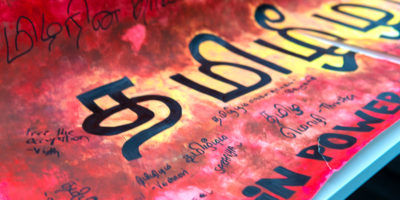By Theresa Laurico
People are drawn to their own cultures, but they’re not always easy to find.
I, like many Canadian-Filipinos, am struggling to get in touch with my cultural roots. We are not Chinese, Spanish, Indian, black or white—we are distinctly Filipino. We have our own language and practices, as well as history unknown to many—including Filipinos themselves.
“The main problem with young Filipinos is that they do not know anything about where they came from,” says Len Cervantes, editor-in-chief of BrownScene Magazine. “They must learn to love themselves as Filipinos and should try to find and take pride in the beauty and essence of their own culture.”
Since I was born and raised in Canada, I can relate to the challenge of finding my roots. I was taught traditional Filipino values and practices, but like others born in Canada, I consider myself part of a different breed of Filipino values and practices, but like others born in Canada, I consider myself part of a different breed of Filipinos.
We have our own set of values and beliefs and are a mix of both Filipino and Canadian upbringings. We are a generation in constant search for a better understanding of not only our culture, but in essence, who we are as Filipinos.
People usually think we are a mix of Asian and Spanish when in fact we are neither. We should be recognized for who we are and what we represent as individuals with a rich culture—a culture that includes having a language with over 60 different dialects and people who are still fighting for a national identity.
The Philippines is the only predominant Christian nation in Asia and has a unique blend of Malaysian, Spanish and American culture. It is made up of 7,100 mountainous islands off the mainland of Southeast Asia in the northern tropics. Just like any country, some areas are not as developed or industrialized as others.
But no matter where one lives, family and religion play a key role in Filipino’s life.
Traditionally, the most significant social group is the family unit. As a sign of respect, older brothers are addressed as “Kuya” and older sisters as “Ate.” Growing up, I was aware of proper addressing but it was never practiced in my house. Even though many routines aren’t common to some Filipino-Canadian homes, some rituals still remain sacred.
As I struggle to balance an active university life, my mother usually gets mad at me for not attending Sunday mass. Like other nationalities, Filipinos are very religious. In almost every house is a statute of the Sante Ninyo—the infant Jesus. About 85 per cent of the Philippine population is Roman Catholic because of the early influence of the Spanish clergy. There are numerous religious rituals where people fast and celebrate. This is only the surface of the fascinating Filipino culture. But sadly, many are unaware of even this much.
COnferences such as the Canadian Awareness of the FIlipino Experience (CAFE), hosted by the Filipino Canadian Student Association of Ryerson earlier this year, play an important role in guiding and preparing the future of Filipino-Canadians. The conferences help foster a sense of community, understanding and co-operation among Filipino-Canadian students.
“Filipinos should have fun while learning more about who they are,” says Philip Guerrero, a YTV personality. “Events like CAFE are a great opportunity to get involved and meet other Filipinos.”
By participating and celebrating in cultural activism, we can take pride in who we are. We should not only try to preserve and pass down parts of our culture but should also develop methods of applying these values and skills to our ever-changing, vibrant, modern Canadian society.
Knowing your history and heritage is the first step in finding your cultural identity.










Leave a Reply